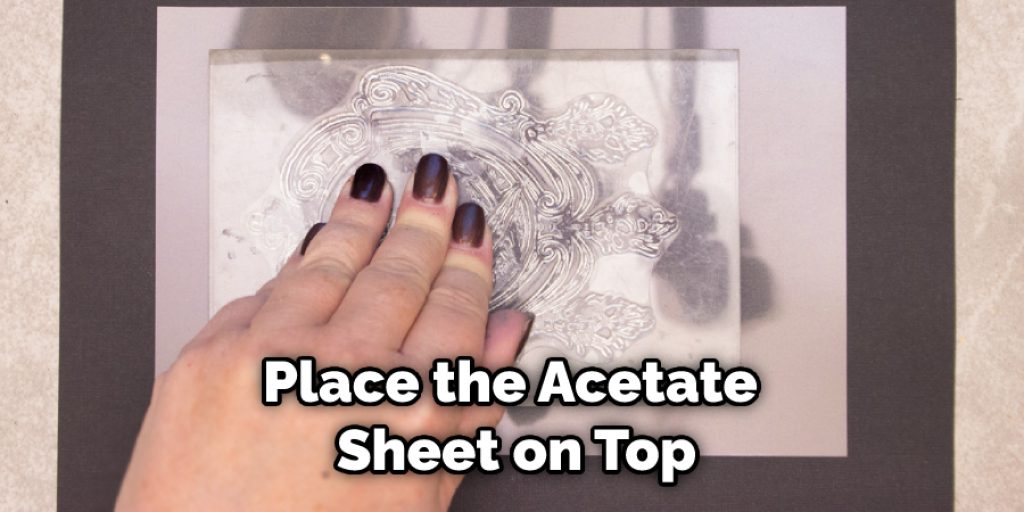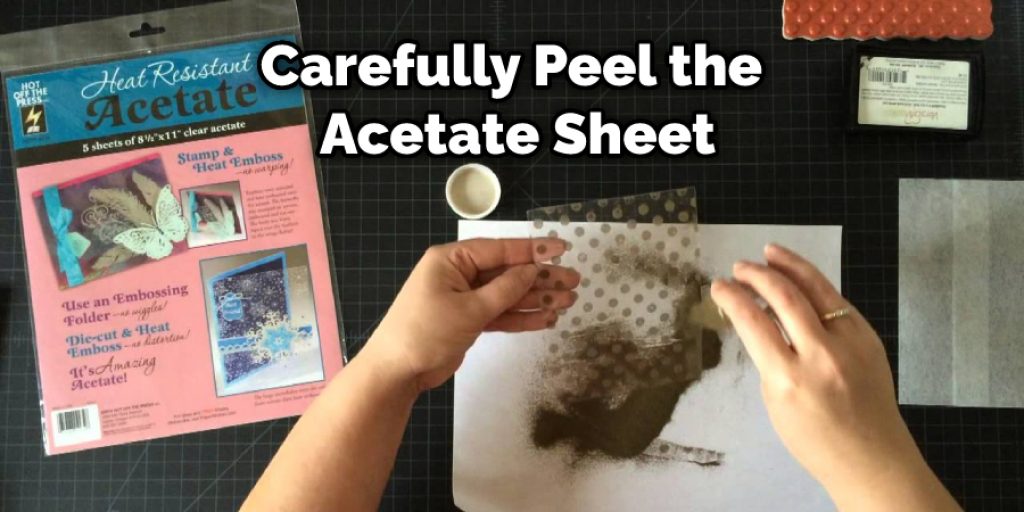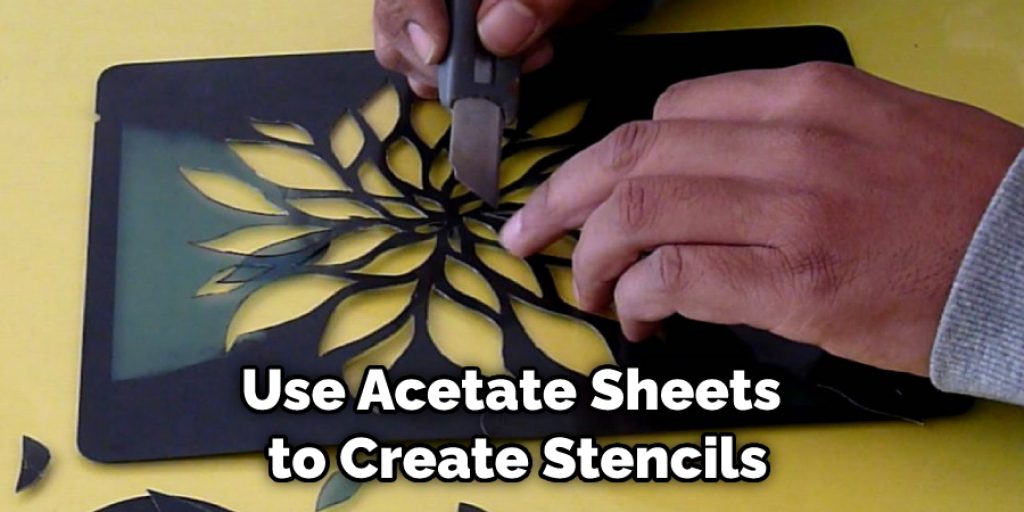How to Use Acetate Sheets for Art
Are you looking for a unique way to create art? Then, acetate sheets may be just what you need! This material is versatile and can be used for a variety of projects. Learn how to use acetate sheets for art in this tutorial. You’ll be amazed at the results!

What Is an Acetate Sheet
An acetate sheet is a clear, thin sheet of plastic used for various purposes, from protecting documents to making crafts. For example, graphic designers and architects often use acetate sheets as an overlay when tracing or photocopying images. They are also commonly used as negative carriers in x-ray and window installation films.
In addition to its professional uses, acetate sheeting can also be found in various home applications, such as making stencils, protecting surfaces during painting projects, or creating personalized gift wrap. A versatile material that has many uses in both the home and office.
Why Should You Use Acetate Sheets for Art
Acetate sheets have a variety of uses in art and design. They are translucent, making them ideal for overlays and tracing. They can also be used to create stencils, or as a protective covering when working with fragile media such as charcoal.
Acetate sheets are flexible and durable, meaning they won’t tear or crease easily. In addition, they are easy to cut and shape, making them a versatile material for a wide range of creative projects.
So acetate sheets are a great option, whether you’re looking to add a touch of transparency to your artwork or need a tough and sturdy surface to work on.
How to Use Acetate Sheets for Art Step by Step Guide
Step 1: Sketch Your Design
Sketch your design on a piece of paper first. This will help you map out how you want your final product to look and also give you a chance to make any necessary adjustments before you begin working with the acetate.
Step 2: Position the Acetate on Your Surface
Place the acetate sheet on top of your surface. If you’re using it to create a window in a card or invitation, place it where you want the window to be.

Step 3: Trace Your Design
Trace your design onto the acetate with a permanent marker. Be sure to use a marker specifically designed for use on plastic, or it may not dry properly and could smear.
Step 4: Cut Out Your Design
Once you’re happy with your sketch, use a sharp knife or scissors to cut out your design carefully. If you’re working with intricate details, you may want to use a template to help you get a clean cut.
Step 5: Adhere the Acetate to Your Surface
Use a strong adhesive to adhere the acetate to your surface. Ensure that the adhesive is specifically designed for use on plastic or may not hold properly.
Step 6: Apply Paint or Ink
Apply your paint or ink to the acetate. You can use a brush, sponge, airbrush, or any other type of applicator that you prefer. Be sure to work in a well-ventilated area as some inks and paints can be fuming.
Step 7: Let It Dry
Let your design dry completely before moving on to the next step. This could take anywhere from a few minutes to a few hours, depending on the type of ink or paint that you used.
Step 8: Remove the Acetate Sheet
Once your design is dry, carefully peel the acetate sheet away from your surface. If any parts of your design are still wet, the acetate may tear them away from the surface. However, if everything goes according to plan, you should be left with a beautiful design that will impress you!

Step 9: Enjoy Your Finished Product!
Now that you know how to use acetate sheets for art put your new skills to the test and create something beautiful! Be sure to experiment with different mediums and techniques to see what interesting effects you can create.
Acetate sheets are a great way to add a unique touch to your artwork. By following the steps above, you can create beautiful designs that stand out. So don’t be afraid to experiment and have fun with acetate sheets!
What Types of Art Can You Create with Acetate Sheets
Acetate sheets are a versatile medium that can be used for various art projects. One of the most popular ways to use acetate is in an animation project. By drawing images on different acetate sheets and then flipping through them quickly, you can create the illusion of motion.
Acetate can also be used to create stencils for painting or airbrushing. By cutting out a design on an acetate sheet, you can create a sharp outline that can be used to produce clean lines on any surface.
In addition, acetate sheets are often used as overlays to add interest and depth to photography. By placing a sheet of tinted acetate over a picture, you can create a unique effect that will turn heads.
Some Other Types of Art Can You Create with Acetate Sheets
Acetate sheets are versatile tools that can be used for various art projects. Here are some ideas to get you started:
Drawing and Painting:
Use acetate sheets as a surface for drawing and painting. You can also use them as tracing paper to trace images onto another surface.
Collage:
Use acetate sheets to create unique collages. You can glue objects to the sheet or use them as your collage background.
Stencils:
As mentioned above, you can use acetate sheets to create stencils for painting and airbrushing.

Printmaking:
Use acetate sheets as a printing plate. You can create relief prints or intaglio prints.
How to Get Started with Using Acetate Sheets for Your Artwork
Acetate sheets are a great way to add a unique touch to your artwork. They are thin, transparent sheets that can be used to create various effects. Here are some tips on how to get started with using acetate sheets for your artwork:
1. First, decide what effect you want to create. Do you want to use them as a background or foreground element? Do you want to use them to create a layered effect?
2. Next, choose the right type of acetate sheet. There are many different types available, so it is important to choose one that will work well for the type of artwork.
3. Once you have chosen the right type of acetate sheet, it is time to start working on your artwork. Begin by sketching out your design on a piece of paper. Then, use a sharp knife or scissors to cut the acetate sheet into the desired shape.
4. Finally, glue the acetate sheet onto your artwork. Use a strong adhesive so that it will stay in place.
Frequently Asked Question
What Kind of Paint Do You Use on Acetate Sheets?
Acetate sheets can be used with many different types of paint. Some artists prefer to use acrylics, while others use oil paints. Experiment with different types of paints to see what works best for you.
Is Acrylic the Same as Acetate?
No, acrylic is not the same as acetate. Acrylic is a type of plastic, while acetate is a type of paper.
Conclusion
Acetate sheets are a versatile art supply that can be used in various ways. By experimenting with different techniques, you can create unique and beautiful art pieces. We hope you enjoy using acetate sheets as much as we do! Thanks for reading our post about how to use acetate sheets for art.




